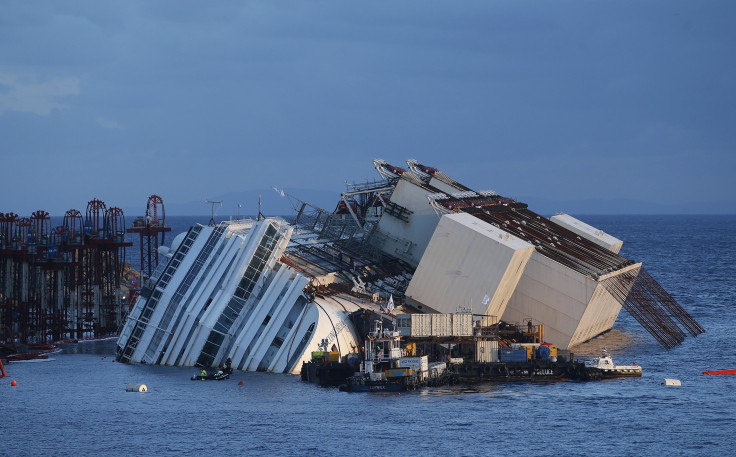Salvaging Costa Concordia: 5 Things To Know About The Massive Operation

Twenty months after the Costa Concordia cruise ship ran aground off Italy’s Tuscany coast, a team of engineers finally made progress Monday in the daunting task of bringing the ship upright. Here’s a look at five things you need to know about the massive salvage operation that’s currently underway.
The Salvage Operation is Unprecedented In Its Scale
The $800 million salvage project to right the shipwrecked Costa Concordia is, without a doubt, one of the largest and most ambitious operations ever conducted in maritime history. Some 500 engineers, mechanics and divers from 26 countries across the globe have spent the past year and a half preparing for the day when a team, lead by U.S.-based Titan Salvage and Italian company Micoperi, would attempt the seemingly impossible task of pulling a 114,500-ton ship that’s two and a half times the size of the Titanic back into an upright position. Now that day has come, and the team has made two things abundantly clear: Nothing has been left to chance and there is no plan B.
Monday’s Effort Follows More Than A Year Of Preparation
Titan Salvage and its Italian partner Micoperi were awarded the contract to upright and re-float Costa Concordia in April 2012. The pair have worked around the clock ever since to stabilize the wreck, attaching watertight chambers called caissons to the side above water and building an underwater platform made of steel and concrete for the ship to rest on, once upright. South African Nick Sloan, Titan’s senior salvage master and head of the salvage operation, said this week that the hull had gradually weakened and may not survive another winter, thus giving the salvage attempt a now-or-never sense of urgency. The plan was given the official green light after forecasters deemed the wind and sea conditions Monday to be well within the limits set by the experts to be able to proceed with the removal.
Workers Will Pull The Ship Upright Using A Parbuckling Technique
Salvage teams will use more than 50 massive chains and winches to roll the ship up onto its keel where, by the end of day Monday, it should be sitting on the specially prepared underwater platform. The engineers will roll the ship up with the help of massive water-filled metal boxes welded to the ship’s port side in a process known as parbuckling. The whole procedure will be a slow and laborious one at about 3 meters (10 feet) per hour. Titan expects it to last most of the day Monday as a 12-man team on a barge close to the wreck eases the ship upright over 12 hours to stave off any further damage to the hull, which has already spent 20 months partially submerged in 15 meters (50 feet) of water. Experts say one of the most critical moments will come with the initial attempt to pull the ship off the rocks, given the uncertainty over just how much the rocks will try to hold on.
Some Experts Fear a Toxic Spill
Costa Concordia had only just set off on a Mediterranean cruise when it ran aground in the waters by Giglio Island, leaving behind a week’s worth of food for more than 4,000 people. The grocery list of items trapped inside the ship right now includes 11,000 eggs, 17,000lbs of beef, 5,500lbs of cheese and more than 1,000 gallons of milk, according to the Daily Telegraph, among a host of other now-rotten foods. Experts fear this toxic stew --which also includes paint, cleaning supplies and insecticide -- is just waiting to spew out of the crippled cruise liner when it’s righted Monday, polluting the pristine waters and marring the picturesque coast. Costa Cruises said it was confident that the debris would be fully contained by absorbent booms on the surface of the sea and in underwater nets, which will “act like a giant underwater skirt.”
Costa Concordia Isn’t Going Anywhere Anytime Soon
Assuming the ship gets back on its keel in one piece Monday, salvage teams will then complete a thorough inspection of the starboard side before planning the next course of action. The goal is to repair and re-float the vessel so it can be towed away and eventually destroyed. Though Monday’s effort to right the cruise liner marks a major milestone in the long journey to remove it from the Italian coast, the ship will remain in place for the time being. The re-floating process is not expected before the spring of 2014, and Costa Concordia’s final port of destination has yet to be decided.
© Copyright IBTimes 2025. All rights reserved.






















